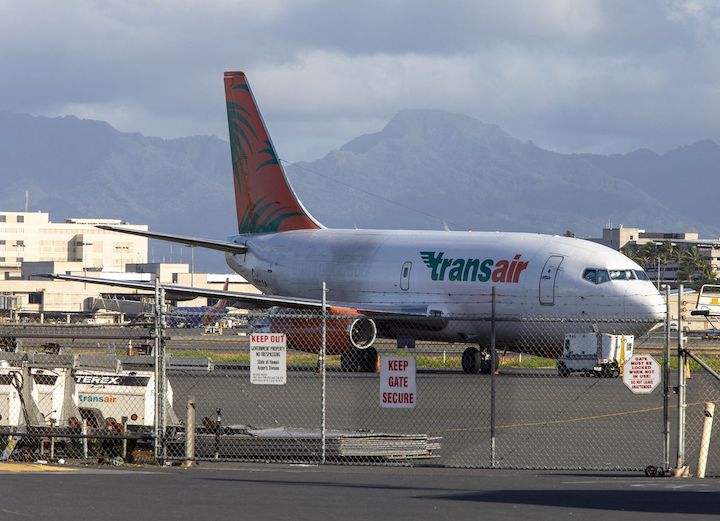
U.S. investigators plan to begin scanning the sea bed off Hawaii in search of the wreckage of a Boeing Co. 737-200 that went down after losing power in both its engines.
Special sonar devices that can map the sea bed will be used to locate critical wreckage and the jet’s two crash-proof recorders, the National Transportation Safety Board said in a release.
“That information will be used to determine how and when the recorders could be recovered and then how and if the airplane will be salvaged,” the NTSB said.
Investigators are also scheduling interviews with Transair Flight 810’s two pilots, who survived after ditching the plane early Friday, as well as with air traffic controllers and the small cargo operator’s maintenance workers. The company is branded as Transair and operated by Rhoades Aviation Inc.
The 46-year-old plane went into the water about 11 minutes after taking off from Daniel K. Inouye International Airport in Honolulu about 1:30 a.m. local time on July 2. After the plane lost one engine, pilots attempted to return for a landing. But a pilot radioed that the second engine was also failing.
So-called black box recorders on the plane should capture the pilots’ conversation in the cockpit and track the route and other data from the flight.

Follow us on social media: